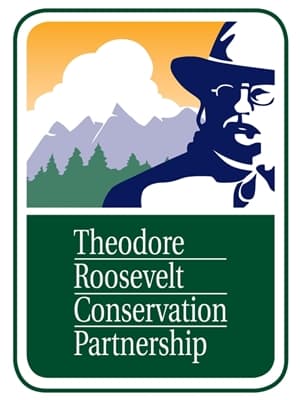TRCP: Unprecedented Federal Agreement Will Spur Conservation on Privately Owned Lands

Landowners gain long-term regulatory predictability in management practices; sportsmen benefit from enhanced habitat conservation for key game species
An unprecedented lands management approach unveiled by the federal government will provide long-term regulatory predictability to agricultural and private landowners and improve habitat for a range of valuable game species, the Theodore Roosevelt Conservation Partnership announced today.
Natural Resources Conservation Service Chief Dave White and U.S. Fish and Wildlife Service Director Dan Ashe discussed the innovative new approach on Sunday evening at the TRCP’s annual Western Media Summit, briefing participants about the plan’s benefits and objectives. The plan was formally announced this morning.
“This partnership between the U.S. Fish and Wildlife Service and the Natural Resources Conservation Service reflects the direction we need to go and want to go in the future,” said Ashe. “It’s important for agriculture and important for species conservation. It represents a great step forward – and how we need to continue doing business moving forward.”
Farmers, ranchers and forest landowners taking part in the Agriculture Department’s Working Lands for Wildlife initiative are eligible to participate in the approach, whereby landowners voluntarily implement practices designed to conserve fish and wildlife habitat, including habitat for several at-risk and vulnerable game species. Seven species, including the sage grouse and lesser prairie chicken, are identified as initial targets for management.
“By adopting this approach, we’re maximizing our investments in conservation and working cooperatively to resolve habitat management issues,” said White. “We think this agreement should be the template for how we deal with endangered species in America.”
“Through the Working Lands for Wildlife Initiative, the departments of Interior and Agriculture recognize that private landowners have been and will be more effective wildlife stewards if they just receive a little help,” said Dr. Steve Williams, president of the Wildlife Management Institute, former director of the U.S. Fish and Wildlife Service and TRCP board member.
“This initiative provides a powerful tool for farmers, ranchers, and forest land owners,” stated Williams. “Through the federal government’s providing technical assistance and grant dollars, wildlife habitat practices will be put in place to preserve species and provide much needed regulatory certainty for landowners struggling to sustain their private working lands.”
“This unique agreement recognizes that species conservation works best when private landowners are committed and active partners in the process,” said TRCP President and CEO Whit Fosburgh. “It makes funds available to help implement important projects and guarantees to landowners that the government won’t keep moving the goal line.
“Certainty is key,” continued Fosburgh. “If a landowner undertakes conservation projects that work and a listed species moves onto his or her lands, or if a resident non-listed species like sage grouse subsequently becomes listed under the Endangered Species Act, that landowner can be confident that he or she won’t suddenly be subject to new restrictions or penalties.”
Such “safe harbor” agreements are not unique and are a mainstay of Endangered Species Act implementation on private lands. The new plan, however, is notable both in its duration (up to 30 years) as well as its scope (in terms of geographical range of the species in question). Further, WLFW is strongly funded: $33 million has been allocated for on-the-ground implementation of the initiative in 2012.
“Why should sportsmen care about this initiative?” asked Fosburgh. “First, the seven species in the agreement are surrogates for important game species. Conserving and restoring sage grouse directly benefits mule deer and pronghorn, which share the same habitats. Second, about half of all Americans hunt only on private lands. Ensuring that these lands remain healthy and productive and that landowners have adequate resources and long-term regulatory certainty is in everyone’s best interests. Secretaries Vilsack and Salazar should be commended for taking this bold step forward in the name of conservation and sportsmen.”
“The Grouse Partnership is encouraged to see the NRCS and USFWS work together to conserve grouse,” said Dr. Terry Riley, director of conservation policy for The Grouse Partnership, a TRCP partner group. “We hope this cooperative effort will result in more and better grouse habitat and more opportunities for grouse enthusiasts.”
“This is the quintessential ‘win-win’ proposition for wildlife and private land owners – ball caps and cowboy hats will be waving across the country,” concluded Williams. “I applaud the ingenuity and partnership-building efforts of the Fish and Wildlife Service and the Natural Resource Conservation Service.”

